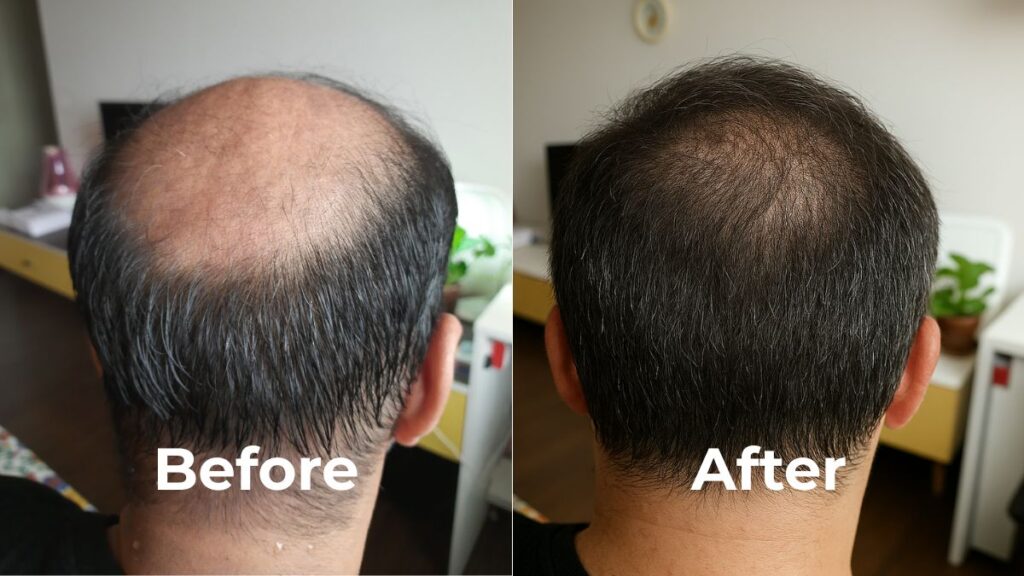How I Reversed Male-Pattern Baldness and Regained a Full Head of Hair After 20 Years

Almost two-thirds of men worldwide experience male-pattern baldness, medically known as androgenetic alopecia. It can affect self-confidence, social interactions, and even mental health. I was no exception. My journey with hair loss started when I was just 19, and it took over two decades before I finally managed to reverse it and regain nearly a full head of hair. Here’s my story.
The Early Signs of Baldness
At 19, I noticed excessive hair fall, thinning strands, and a slightly receding hairline. Back then, I wasn’t too worried. I had naturally dense hair, and the thinning didn’t seem significant. I attributed it to hostel life, erratic routines, and lack of proper hair care. Regular oiling and general attention to hair hygiene seemed enough at that stage.
By the time I was 22, a small bald patch appeared on the crown of my head. I became more conscious and started taking care of my hair diligently. But as life got busier with work and career, my focus on hair care waned. Gradually, the hair loss continued silently.
The Onset of Male-Pattern Baldness
By my 30s, the patterns of male baldness were unmistakable. My hairline had mostly disappeared, and the bald patch on my crown had grown noticeably. I started experimenting with various hair growth products, but none produced results. The hair loss affected my confidence deeply. I avoided social events, presentations, and anything that would put me in the spotlight.
As I entered my 40s, the situation worsened. Only a few thin, lifeless patches remained on the back and sides of my head. I sometimes forgot what it felt like to have a full head of hair. Thoughts of shaving my head completely crossed my mind—it seemed better to take control of the situation than to hide it. Hair transplants were an option, but they were expensive, had uncertain results, and carried potential side effects.
The Turning Point
At 45, I had resigned myself to baldness when I read an article suggesting that hair loss could be reversed without transplants. Skeptical but curious, I visited a dermatologist specializing in hair care. As expected, the doctor recommended a hair transplant. I declined and asked if there was any alternative. Reluctantly, the doctor provided a prescription, cautioning me that results would likely be minimal.
After researching, I realized that this prescription was the only non-surgical route to try. Determined, I committed fully to the treatment, promising myself not to miss a single dose.
The Treatment Journey
The initial months were challenging. My remaining hair began to fall, the scalp became irritated, and I experienced frequent headaches. Internet research and follow-up with my doctor reassured me that these were temporary reactions. The first four months showed only thin, fragile, colorless hair in bald areas. The process was slow, and it was mentally tough to keep going.
Persistence paid off. After about six months, the new hair began to thicken and regain its natural dark brown color. Hair loss of the remaining strands stopped completely. Within a year, the bald patches were mostly gone, and my hairline had returned closer to my forehead. Eighteen months into the treatment, I had almost as full a head of hair as I had in my twenties, with the freedom to style it as I pleased.
The Prescription
Here’s what the doctor prescribed:
- Finasteride – One tablet daily after dinner
- Minoxidil – Applied twice daily to bald patches
- Vitamin supplements – One capsule daily after dinner
- Mineral supplements – One tablet daily after breakfast
I’ve intentionally not included brand names because these medications require medical supervision. They are not over-the-counter products, and incorrect usage can have serious side effects.
Side Effects
The treatment was not without its challenges:
- Scalp irritation and redness
- Headaches
- Indigestion and bowel irregularities
- Reduced libido and erectile dysfunction
Thankfully, these side effects subsided after six months. By then, the benefits far outweighed the difficulties.
Key Lessons and Advice
Regrowing hair after male-pattern baldness is extremely difficult without a transplant. Success requires:
- Immense patience, especially during the first six months when visible results are minimal
- Enduring initial side effects without giving up
- Financial commitment, as the treatment costs around Rs. 2,000 per month and must be continued indefinitely
- Strict adherence to the treatment schedule—missing even a single dose can reduce effectiveness
Consult a qualified dermatologist before starting any treatment. Self-medication or following advice from the internet can be risky.
Final Thoughts
Today, I have nearly a full head of hair and the confidence I once lost. The process demanded persistence, discipline, and patience, but the results were worth it. Male-pattern baldness can feel like an unavoidable fate, but with the right approach and commitment, significant reversal is possible.
If you are considering this journey, be mentally and financially prepared for the long haul. Your patience and dedication will determine the outcome.
Disclaimer: The author wishes to remain anonymous and has no medical expertise. The experiences shared are personal and should not be treated as medical advice. Always consult a qualified medical practitioner before starting any treatment. For queries, contact [email protected].









